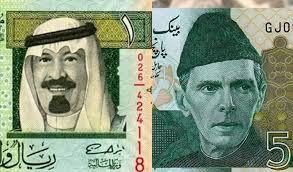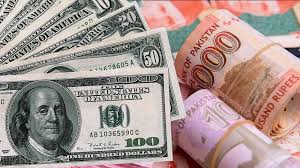
Riyal to PKR – Understanding the Exchange Rate and Its Impact
- Book My Author
- Business
- 2025-09-24 10:56:39
- 946K
Riyal to PKR
The Saudi Riyal (SAR) to Pakistani Rupee (PKR) exchange rate is one of the most important financial figures for Pakistanis. With millions of Pakistanis working in Saudi Arabia, the Riyal has a special connection with families across the country. Every month, large amounts of remittances flow from Riyals to Rupees, supporting households, businesses, and even the national economy.
The Riyal to PKR exchange rate is more than just a number shown on currency boards. It reflects economic strength, global trade links, and the financial stability of both countries. For families depending on remittances, businesses managing imports, and travelers preparing for Hajj or Umrah, the daily value of Riyal in Pakistan carries huge importance.
The Importance of Riyal for Pakistan
Saudi Arabia is home to one of the largest communities of Pakistani workers. Millions of skilled and unskilled laborers, professionals, and businessmen live in cities like Riyadh, Jeddah, Dammam, and Makkah. They send money back home every month, mostly in Saudi Riyals.
This constant flow of remittances makes Riyal one of the most traded foreign currencies in Pakistan. According to economic surveys, Saudi Arabia consistently ranks among the top sources of remittances to Pakistan, often contributing billions of dollars annually.
For this reason, when people check Riyal to PKR today, they are not just curious—they are calculating how much support their families will receive in Pakistani Rupees.
Open Market vs Interbank Riyal Rate
When converting Riyals into Rupees, people often notice two types of rates:
Interbank Rate: This is the official rate set for transactions between banks. It is usually slightly lower.
Open Market Rate: This is the rate offered by money exchangers and currency dealers. It is the rate that most individuals experience when exchanging Riyals.
For overseas remittances, banks generally use the interbank rate. However, those buying or selling Riyals in local markets, especially in cities like Lahore, Karachi, and Islamabad, often deal with the open market rate.
What Influences Riyal to PKR Exchange Rate?
The exchange rate between Saudi Riyal and Pakistani Rupee changes regularly. Some of the major reasons include:
Oil Prices and Saudi Economy
Saudi Arabia’s economy is heavily dependent on oil. When oil prices rise globally, the Saudi Riyal remains strong, and Pakistan needs more Rupees to buy Riyals.
Pakistan’s Economic Condition
If Pakistan faces inflation, trade deficits, or political instability, the Rupee weakens. This means the Riyal becomes more expensive in local markets.
Supply and Demand
During peak seasons like Ramadan or Hajj, demand for Riyals increases in Pakistan as people prepare for travel or send extra money for family needs. This demand pushes the Riyal to PKR rate higher.
Global Currency Movements
As the Riyal is pegged to the US Dollar, any changes in the dollar’s strength directly affect the Riyal to Rupee exchange rate.
Daily Life Impact of Riyal to PKR Rate
The exchange rate has a very real impact on the daily lives of Pakistanis.
Families of Overseas Workers: A stronger Riyal means families get more Rupees for every Riyal sent home, giving them relief in managing expenses.
Import Businesses: Some Pakistani businesses that deal with Saudi suppliers must pay in Riyals. A higher rate increases their costs.
Travelers for Hajj and Umrah: Every year, thousands of Pakistanis travel to Saudi Arabia. Their expenses—hotel bookings, transport, and shopping—are in Riyals. So the rate directly affects their trip budgets.
General Market Prices: Since oil and other items are linked to the Riyal and Dollar, currency fluctuations often push local prices upward.
Historical View of Riyal to PKR
Looking back at how the Riyal to PKR has moved over the decades shows us the financial journey of Pakistan.
In the early 1980s, one Riyal was worth less than 3 Rupees.
In the 2000s, it averaged between 15 to 20 Rupees.
After 2018, as the Rupee weakened, the Riyal crossed the 30 mark and beyond.
This steady increase reflects both global economic shifts and Pakistan’s internal financial challenges.
The Role of Remittances in Strengthening Pakistan
Remittances sent from Saudi Arabia in Riyals are a lifeline for Pakistan’s economy. They:
Support millions of families in meeting their daily needs.
Contribute to foreign exchange reserves, helping Pakistan pay for imports.
Stabilize the Rupee to some extent by ensuring a regular supply of foreign currency.
Without this inflow, the Rupee would face even greater pressure against the Riyal and the Dollar.
Currency Exchange in Lahore and Other Cities
In major cities of Pakistan, including Lahore, Karachi, and Islamabad, exchange companies play a crucial role. They provide updated Riyal to PKR rates daily and allow people to easily buy or sell currency.
Trusted names like Link International Exchange in Lahore are popular for offering competitive rates and reliable services. With so many Pakistanis depending on Riyal conversions, these exchange services are always in demand.
How to Stay Updated on Riyal to PKR
Since the rate changes daily, staying updated is important. People commonly check:
News channels showing financial updates.
Websites and apps displaying live currency rates.
Currency boards at local exchange shops.
Banks’ official exchange rate notifications.
Being aware of the current Riyal to PKR rate helps people plan remittances, manage travel budgets, and make business payments efficiently.
Riyal Rate During Hajj and Ramadan
Two times of the year highlight the importance of Riyal to PKR:
Hajj Season: Thousands of pilgrims exchange large amounts of money into Riyals, creating a spike in demand.
Ramadan: Families send extra remittances during this month to support relatives, which increases currency exchange activity.
This seasonal trend often causes the Riyal to appreciate slightly in local markets.
The Future of Riyal to PKR in Pakistan
The future of the Riyal to PKR exchange rate will depend on several factors:
Pakistan’s success in controlling inflation and stabilizing the economy.
Global oil prices, since Saudi Arabia’s economy is closely tied to energy markets.
The flow of remittances from overseas Pakistanis.
Government policies and foreign exchange reserves management.
If Pakistan strengthens its exports and reduces dependency on imports, the pressure on the Rupee can ease, bringing more stability to Riyal to PKR rates.
Conclusion
The Riyal to PKR exchange rate is more than just a financial figure—it is a bridge that connects millions of Pakistani workers in Saudi Arabia with their families back home. It affects household incomes, business costs, and even national financial stability.
For overseas workers, a strong Riyal means greater support for their families. For businesses, it influences costs and profits. For the country, it plays a critical role in maintaining foreign exchange reserves.
In a nation where so many depend on Riyal-based remittances, keeping an eye on the exchange rate is essential. Whether it rises or falls, its impact reaches every corner of Pakistan’s economy.







